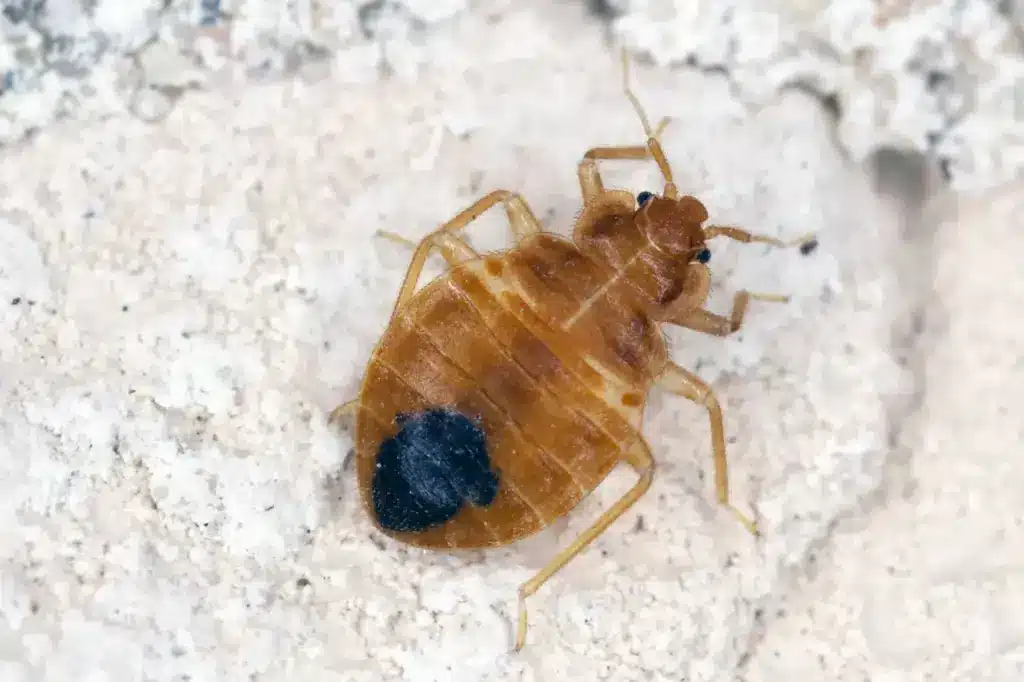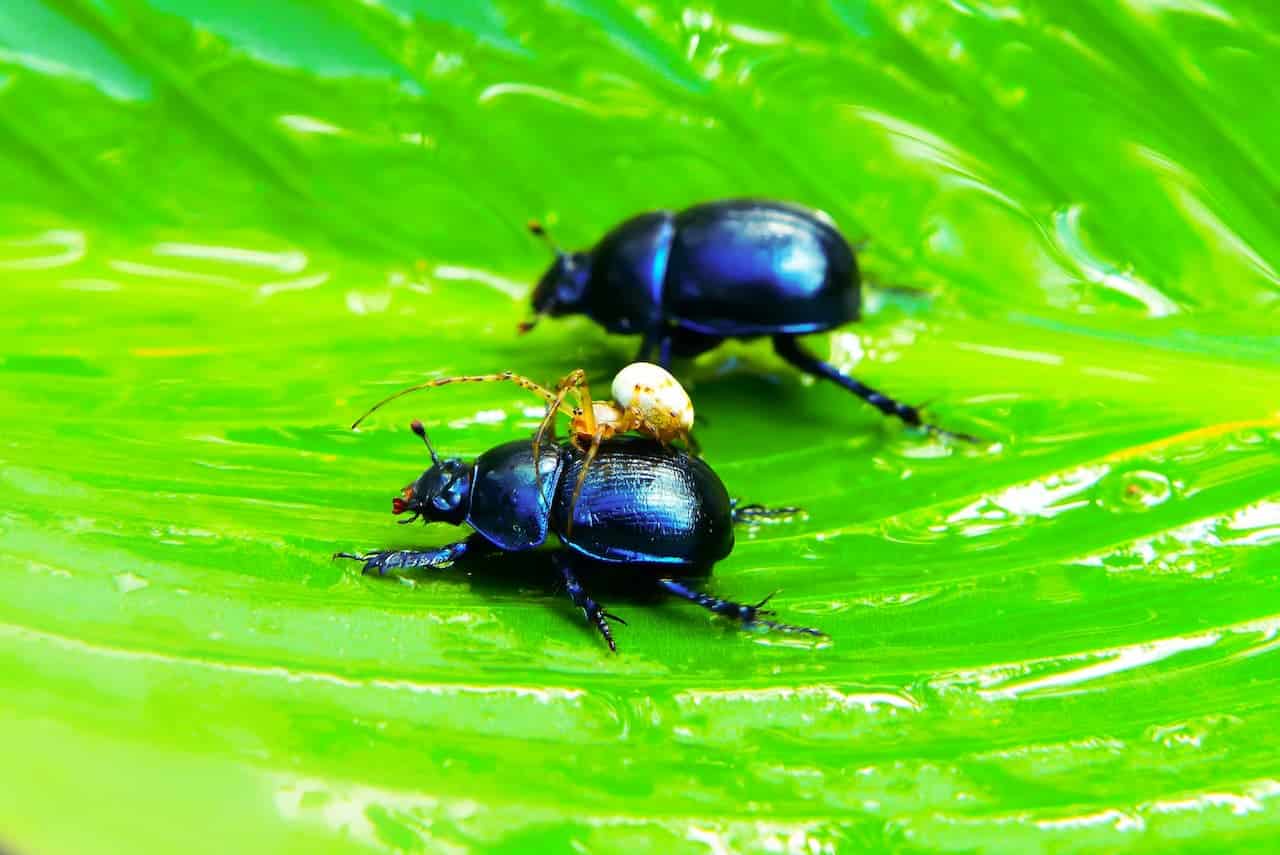Bed bugs are small, oval, brownish insects that feed solely on the blood of animals. They are a member of the family Reduviidae, which contains over 7,000 species worldwide.
Bed bugs are external parasites, meaning they live on the outside of their hosts’ bodies and feed on their blood for survival.
Of the many Reduviidae species, only a few are specialized to be human parasites. The common bed bug (Cimex lectularius) and the tropical bed bug (Cimex hemipterus) primarily feed on humans.
They are nest parasites, meaning they live in the nests or homes of their hosts. For humans, this means bed bugs live and thrive inside our homes and buildings.
Bed bugs have been living with and feeding on humans for thousands of years. References to bed bugs date as far back as ancient Greece and Rome.
Despite their long relationship with humans, bed bugs fell out of prevalence during the mid-20th century with the use of modern pesticides.
However, bed bugs have resurged in recent decades, likely due to increased international travel and the bugs’ resistance to common pesticides.
Today, bed bugs can be found worldwide in homes, hotels, schools, movie theaters, and anywhere humans live and gather.
They are concerning public health pests, as their bites can cause irritation, discomfort, and social stigma. Their stealthy and cryptic nature also makes them difficult to detect and control.

Love reading about parasites? Read about Parasitoids
Bed Bugs Biology and Life Cycle
Bed bugs are small insects ranging from 1-7 mm in length. Their bodies are broad and oval-shaped when unfed, allowing them to fit into tiny cracks and crevices. After feeding on blood, their bodies elongate and become a deeper red color.
Bed bugs belong to the order Hemiptera, known as the “true” bugs. Like other Hemipterans, they have a piercing-sucking mouthpart called a proboscis that allows them to pierce animal skin and suck up blood.
Bed Bugs Developmental Stages
Bed bugs go through a simple metamorphosis with five developmental life stages:
Egg – Tiny, white, pearl-like eggs about 1 mm long. Eggs are covered in a sticky film that adheres to surfaces.
First instar nymph – Extrusive nymphs that are nearly colorless. They must take a blood meal to molt to the next stage.
Second to fifth instar nymphs – Successive stages that are larger and develop a brownish color with each molt. Nymphs must feed between each instar to grow.
Adult – Wingless adults are flat, oval-shaped, and 3-5 mm long. Light brown to red-brown in color when unfed. Adults can survive 6-12 months without feeding.
The lifecycle from egg to adult takes about 1-2 months. Females lay 1-5 eggs per day, up to 500 eggs in their lifetime. Bed bugs go through multiple generations per year.

Bed Bugs Habits and Behavior
Bed bugs spend most of their time hiding in dark, protected sites called harborages. Common harborages include cracks/crevices in furniture, floors, walls, and mattresses.
They typically only come out at night to feed. During the day, they aggregate in harborages near sleeping or resting hosts.
Bed bugs feed every 3-7 days, though can survive months without a meal. They locate hosts by detecting body heat, carbon dioxide, and host kairomones.
When feeding, they insert their proboscis into the host’s skin, inject a salivary fluid that prevents blood clotting, and suck up blood.
The feeding process takes 3-12 minutes. After getting a full-blood meal, the bug returns to its harborage.

Signs of Infestation
Because bed bugs are cryptic and nocturnal, they can be difficult to detect in a home or room. Some signs that may indicate the presence of bed bugs include:
Bites – Itchy, red, swollen welts on exposed skin, often in linear patterns of multiple bites. Bites may take days to appear. Not everyone reacts to bites.
Blood Spots – Small dark red spots on sheets and bedding from crushed bugs or bug excrement. It may also be seen on furniture or walls.
Molted Skins – Light brown shed skins from juvenile bed bugs as they outgrow exoskeletons.
Odor – Some describe a sweet or musty odor from bed bug scent glands. Not all infestations emit an odor.
Feces – Small dark stains from bed bug waste material. Spotting on sheets, mattresses, or walls near harborages.

Want to read more about bugs? Read: Bug Eating Cookbooks
Health Effects
Bed bugs are not known to transmit any communicable diseases. However, their bites can produce mild to severe skin reactions in humans. Reactions vary among individuals, from no reaction to itchy red welts or hives. In rare cases, severe allergic reactions may develop.
The saliva of bed bugs contains proteins that act as anticoagulants to facilitate feeding and immunomodulatory proteins that help the bugs evade detection.
Reactions are the result of sensitivity to these proteins injected when biting. Scratching bites can also lead to secondary infections.
While not physically harmful, bed bugs can produce significant anxiety, stress, and insomnia. Social stigma around bed bugs also causes psychological distress. Frequent bite reactions combined with a lack of restful sleep make bed bugs highly disruptive to people’s lives.
Spread and Prevention
Bed bugs easily spread from place to place via luggage, furniture, clothing, and even people. Their flattened bodies allow them to fit into tiny crevices in belongings and hide undetected during transport.
Infestations commonly originate in hotels or housing with high occupant turnover.
Inspecting Items
To prevent bed bug introduction, carefully inspect secondhand furniture, beds, and bedding before bringing them home.
Thoroughly examine rental spaces and hotel rooms for signs of bugs. Keep luggage off floors and beds.
Heating and Cleaning
Dry potentially infested bedding and clothing on the highest heat setting in the dryer for at least 15 minutes to kill any bugs or eggs.
Seal infested items in plastic bags until they can be treated or discarded. Stop bed bug spread by catching early signs fast.
Reducing Clutter and Harborage Sites
Eliminate clutter, such as stacks of paper, pet beds, etc., to reduce harborage sites. Caulk cracks and crevices in walls and floors.
Treat mattresses and box springs with bed bug-proof encasements. Traps under furniture legs can also help capture stray bugs.
Regular inspections, early detection, and reduction of clutter are key to preventing major bed bug infestations. When detected, contact a licensed pest professional immediately to begin treatment and elimination.
Treatment and Control
Getting rid of bed bugs requires an integrated pest management (IPM) approach, combining both chemical and non-chemical methods. Treatment is intensive and should continue until no signs of bugs are found for 2-3 weeks.
Heat Treatments
Raising room temperatures to 50°C kills all bed bug stages. Portable heaters or whole-room heat treatments provide guaranteed elimination when done properly.
Steam
Direct steam contact kills bugs on contact and penetrates harborages. Repeated steam treatments are needed to get rid of infestations.
Vacuuming
Thorough vacuuming of cracks, seams, tufts, and upholstery removes bugs hiding in harborages. Sealed bags dispose of contents after.
Mattress Encasements
Encasements trap bugs inside and starve them. Any bugs remaining inside will eventually die.
Chemical Sprays
Residual insecticides sprayed in harborages and bed frames/headboards kill bugs on contact for up to 2 weeks. Multiple applications are required.
Discarding Items
Severely infested furnishings, mattresses, etc., may need to be discarded if other methods cannot eliminate bugs.
Cold Treatment
Exposing small items for 1-2 weeks to temperatures below 0°C can kill some bed bug stages—limited utility.
Conclusion
Bed bugs are challenging pests capable of producing substantial disruptions to people’s lives. Their cryptic habits allow them to spread easily and hide out of sight.
Getting rid of infestations requires knowledgeable effort using a combination of professional-grade products, equipment, and techniques.
Guaranteeing elimination requires persistent monitoring. Stopping bed bugs from spreading in the first place is the best approach for effective control.



